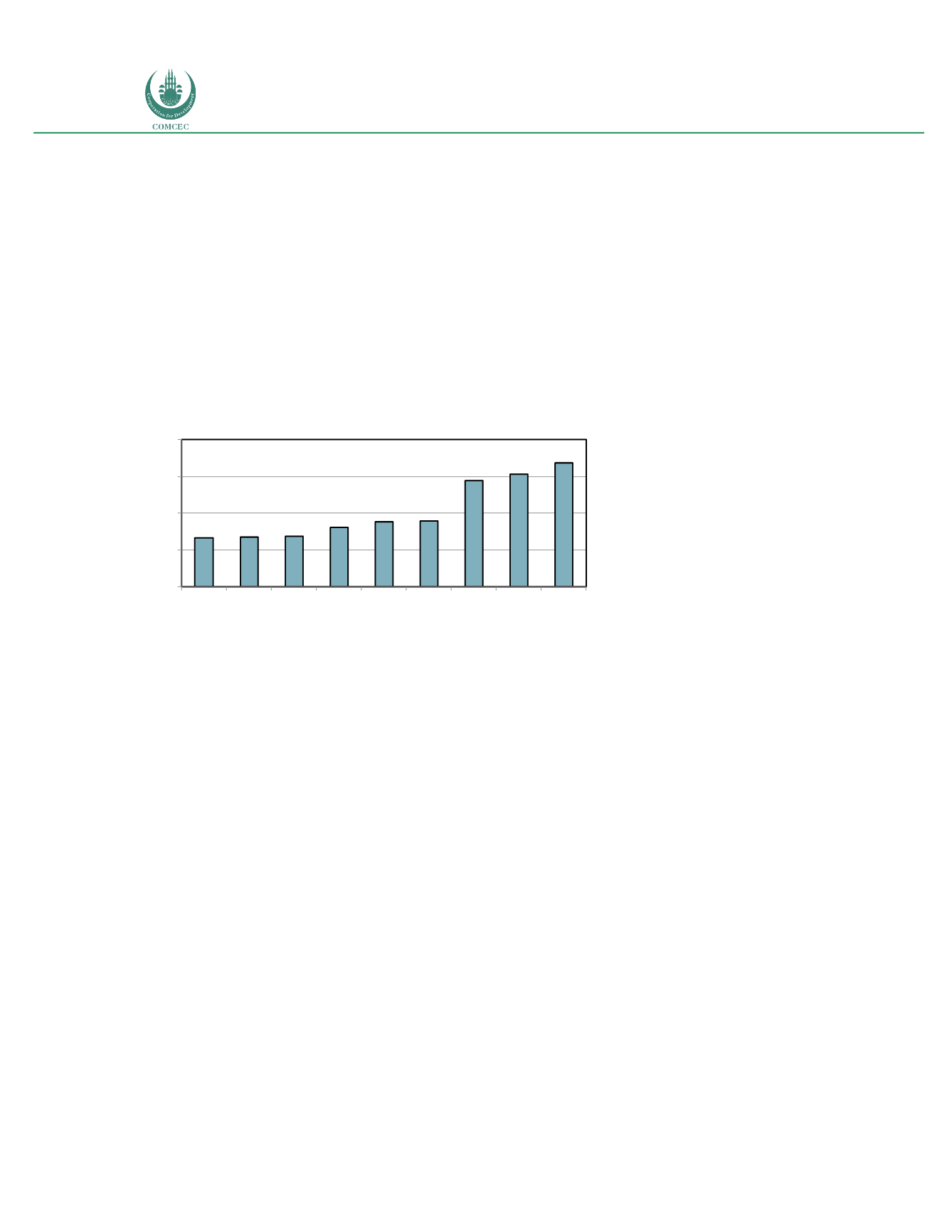

Increasing Broadband Internet Penetration
In the OIC Member Countries
92
Conversely, the study found that teenagers read for leisure an average of 5.6 books per year.
Along these lines, girls tend to read more than boys (6.6 vs. 3.9). The higher levels of video
game playing amongst boys could partly explain this trend. Furthermore, when it comes to
human interaction, most adolescents prefer texting to calling on their cellphones.
A third risk that has been studied particularly in developing countries is cultural uprooting. An
analysis conducted by Prof. Raul Katz of the most popular Internet sites accessed by region
indicates that in MENA countries, only 27 of 100 most popular sites, measured by number of
visitors and time spent on the site are produced locally, while the remaining are either
produced overseas or developed overseas and translated to local language (see figure 25).
Figure 25: P c ntage of local internet content by region (2013)
Source: Katz (2013) based on Alexa data
The data in figure 25 indicates two important patterns. First, developed regions appear to have
a higher percentage of the most popular Internet sites to be local. Second, regions with
linguistic specificities (such as Russia) appear to have a higher percentage of local content.
Conversely, developing regions with use of one of the world languages (Latin America for
Spanish, South Asia for English, MENA and Africa for French and English) tend to have a lower
percentage of local Internet content. The implications of these data are that as result of limited
local content production, the Internet could act as vehicle for cultural uprooting. This finding is
also confirmed by the in-depth case study of Cote d’Ivoire presented in section V.1.
A fourth risk related to the increased use of broadband pertains to the economic disruption of
an Internet shutdown. As discussed in chapter II, world economies are increasingly reliant on
the Internet. Furthermore, and again as explained in the same chapter, broadband is vital for
economic development. In this context, it is reasonable to consider what the economic impact
might be of a disruption of the Internet as a result of either natural or man-made causes. These
appear to be fairly common as documented by Howard, Agarwal, and Hussain (2011). The
authors identified 606 government-imposed shutdowns of the Internet between 1995 and the
26%
27%
27%
32%
35%
36%
58%
61%
67%
0%
20%
40%
60%
80%
Latin America
South Asia
MENA
Africa
East Asia and Pacific
Western Europe
North America
Eastern Europe
Russia & CIS
















